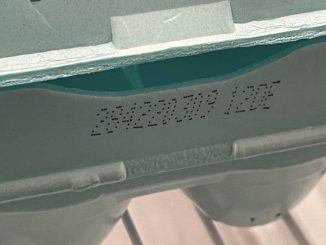
The animal world is full of surprises, with some creatures being more eye-catching than others because of their strange looks or unusual nature.
When I first saw a picture of this weird “penis snake,” I thought it was a joke. But, to my surprise, it turned out to be a real animal. So, let’s dive into the story behind the viral image that has left thousands of people in shock.
Throughout history, anything shaped like a phallus has grabbed attention and sparked curiosity. A few years ago, images of a strange-looking creature started making the rounds online, leaving many people scratching their heads in disbelief.
With its unique appearance, this mysterious animal quickly earned nicknames like the “penis snake,” “blind snake,” or the “man-aconda.”
But no, it’s not what you think.
Even though it looks a lot like a snake, this creature is actually called *Atretochoana eiselti*. It’s not a snake at all, but an amphibian, more closely related to a salamander. It’s also the largest known lungless tetrapod, which means it breathes through its skin instead of lungs.
This rare animal lives in the waters of the Amazon in Brazil and was hard to find for a long time. It was first discovered by Sir Graham Hales during an expedition with Sir Brian Doll in the late 1800s.
However, it wasn’t officially described until 1968. After more research, scientists reclassified it in 1996, giving it its own unique genus, *Atretochoana*.
In 2011, this species was rediscovered in the Amazon region. It lives only in the Amazon River and its largest tributary, the Madeira River in Brazil. The “penis snake” has only been found in this area and nowhere else in the world.
The viral pictures that blew up the internet a few years ago actually came from 2011. That’s when a whole family of these phallic-shaped creatures was found at the bottom of the Madeira River in Brazil. They were discovered when the river was drained during work on a hydroelectric dam.
Julian Tupan, a biologist working with the Santo Antonio Energy company on the dam, explained that not much is known about these lungless, limbless amphibians.
“Out of the six we collected, one died, three were released back into the wild, and two were kept for study,” he told *Estadao*, according to the U.K.’s *The Sun*.
Tupan pointed out that these “snakes” aren’t dangerous and are unlikely to show any aggressive behavior.
“Even though they look like snakes, they’re not reptiles; they’re more closely related to salamanders and frogs. We think the animal breathes through its skin and probably eats small fish and worms, but that hasn’t been proven yet.
“The Amazon is full of surprises when it comes to reptiles and amphibians. There’s still a lot more to discover.”
According to a paper published in the Brazilian scientific journal *Boletim do Museu Paraense Emílio Goeldi: Ciências Naturais*, one of these creatures found in the riverbed was photographed extensively. Some of the animals were released back into the Madeira River, while others were sent to the Emilio Goeldi Paraense Museum in Belem, Brazil.
The most popular photo, which Julian Tupan shared on Instagram, shows an adult female *A. eiselti* that’s just under 40 inches long.
Even though these creatures are fascinating, there’s still a lot we don’t know about them. One mystery that puzzles researchers is their diet. Scientists think these phallic-shaped animals might eat small fish, worms, and other aquatic invertebrates, but more research is needed to confirm this.

Another mystery about these creatures is how they breathe, as scientists haven’t confirmed the method yet. When the six specimens were discovered in 2011, it made things even more puzzling. What’s especially interesting is where they were found— in cold, fast-flowing water with limited oxygen. Since warmer water holds less oxygen, their ability to live without lungs is even more remarkable.
Based on these findings, scientists believe this species might be widespread across the Brazilian Amazon and could even extend into Bolivia.
Nature constantly surprises us with its endless wonders. From the deepest oceans to the tallest mountains, the natural world is full of amazing things waiting to be discovered.
Share this incredible story on Facebook with your friends and family to spark their curiosity and get them talking about the wonders of nature!
Sydney Simpson: Living a Private Life away from the Tragedy

AuthorAvokadoReading3 minViews426Published by13.04.2024
Sydney Simpson, the daughter of OJ Simpson and Nicole Brown Simpson, has been attempting to put the widely reported incident that rocked the country behind her for the past thirty years. Sydney was always the center of attention when she was younger, but as she got older, she decided to live a more private life and even changed her name.
A Public Life

Sydney Simpson was sadly found dead from a stabbing in 1994. Her mother, Nicole Brown Simpson, was a well-known football player. The public was enthralled with the incident thanks to live footage of O.J.’s police pursuit in the media. Following an exhausting eleven-month trial, O.J. was ultimately declared not guilty.
Sydney and her brother Justin were kept as far away from the media as possible both during and after the trial. Despite the long-lasting effects of their mother’s untimely death, Sydney has prioritized moving on and leading a secluded life.
Life in the Present
Sydney Brooke Simpson, who is 37 years old, resides in Florida and leads a largely secluded life. She co-founded Simpsy Properties, LLC with her brother, with whom she works in real estate. As a little but meaningful way of giving back to the community, they have acquired affordable rental units.

Sydney would rather keep a low profile, but her brother Justin is on Twitter and regularly shares information about their real estate ventures. Sydney is still hesitant to talk about her father and the killings, despite the fact that it is obvious that her experiences and tale could inspire others. According to her ex-boyfriend Stuart Alexander Lee, Sydney is a responsible and grounded person, but she is afraid of the popularity and the possible repercussions that come with it.
Looking for a Reward
Sydney has voiced her own suspicions regarding her father’s guilt, claiming that a botched drug deal might have been the cause of her mother’s death. She’s not sure who to believe since she thinks the cops and media may have been manipulating the issue.
OJ Simpson passed away at the age of 76, and Sydney and her family are experiencing conflicting emotions. They are still plagued by the tragedy of Nicole Brown and Dan Goldman’s unsolved deaths because no one has ever been prosecuted for the crimes. Sydney nevertheless aspires to lead a quiet and private life in spite of the terrible events in her past.

Participate in the Discussion
There is still discussion and interest in Sydney Simpson’s and her family’s story. This regrettable phase of their lives still strikes a chord with a lot of individuals. How do you feel about this story? Talk about your thoughts and let’s discuss O.J. Simpson and his legacy.
Should you find this piece fascinating, you may also find the account of the reporter’s ten-day incarceration in a mental health facility intriguing. The doctors were taken aback when her genuine identity was discovered.



Leave a Reply